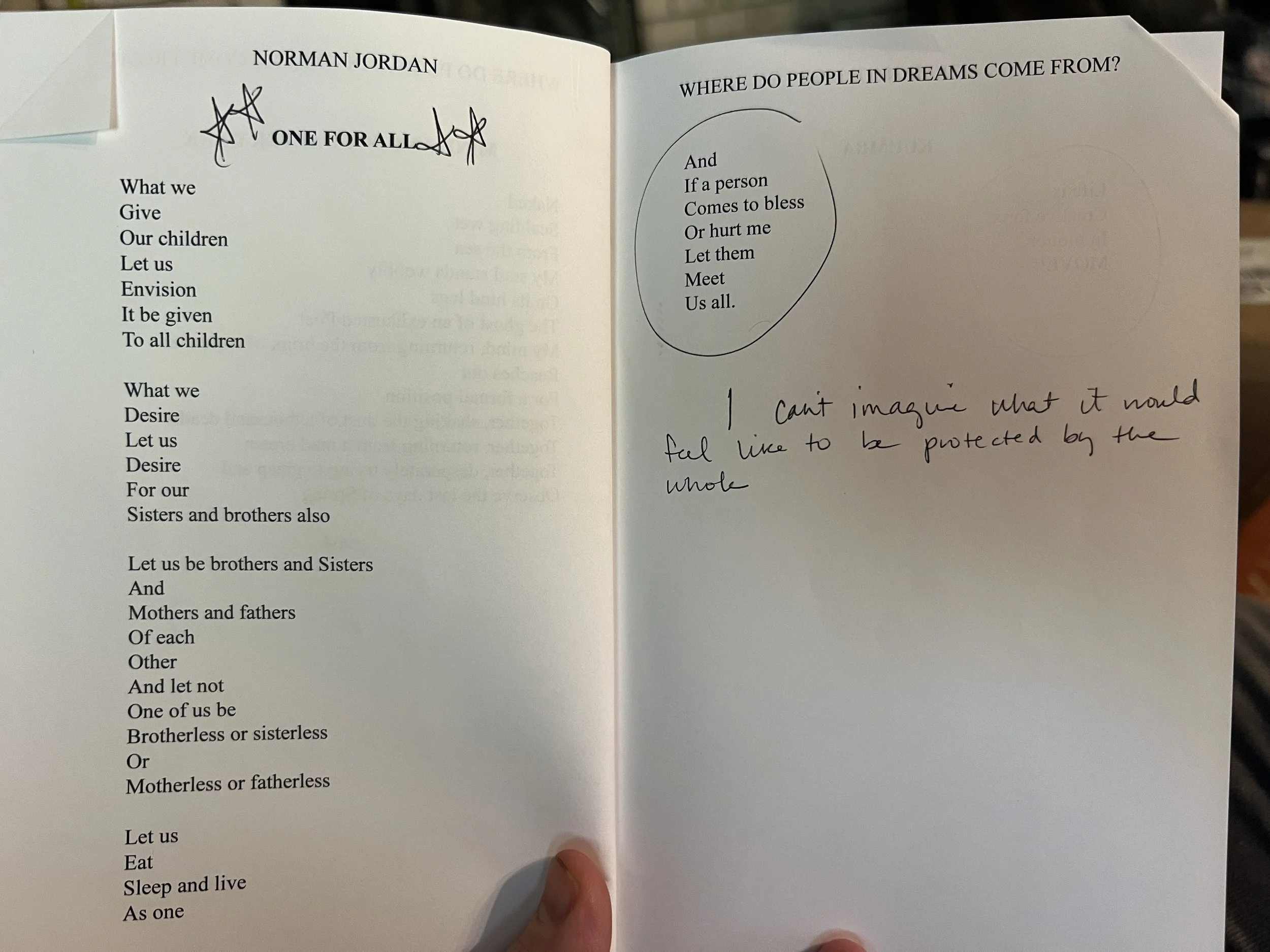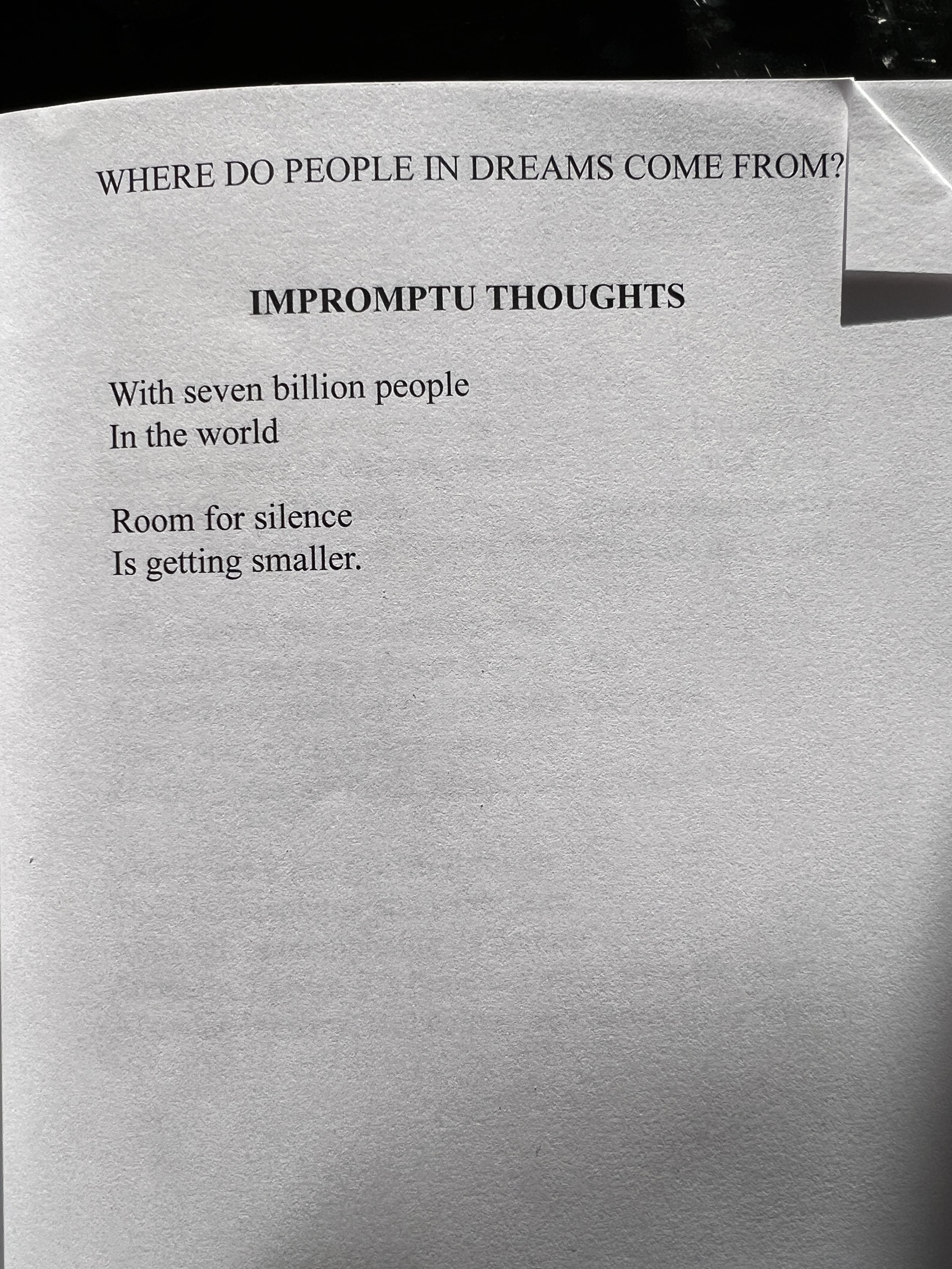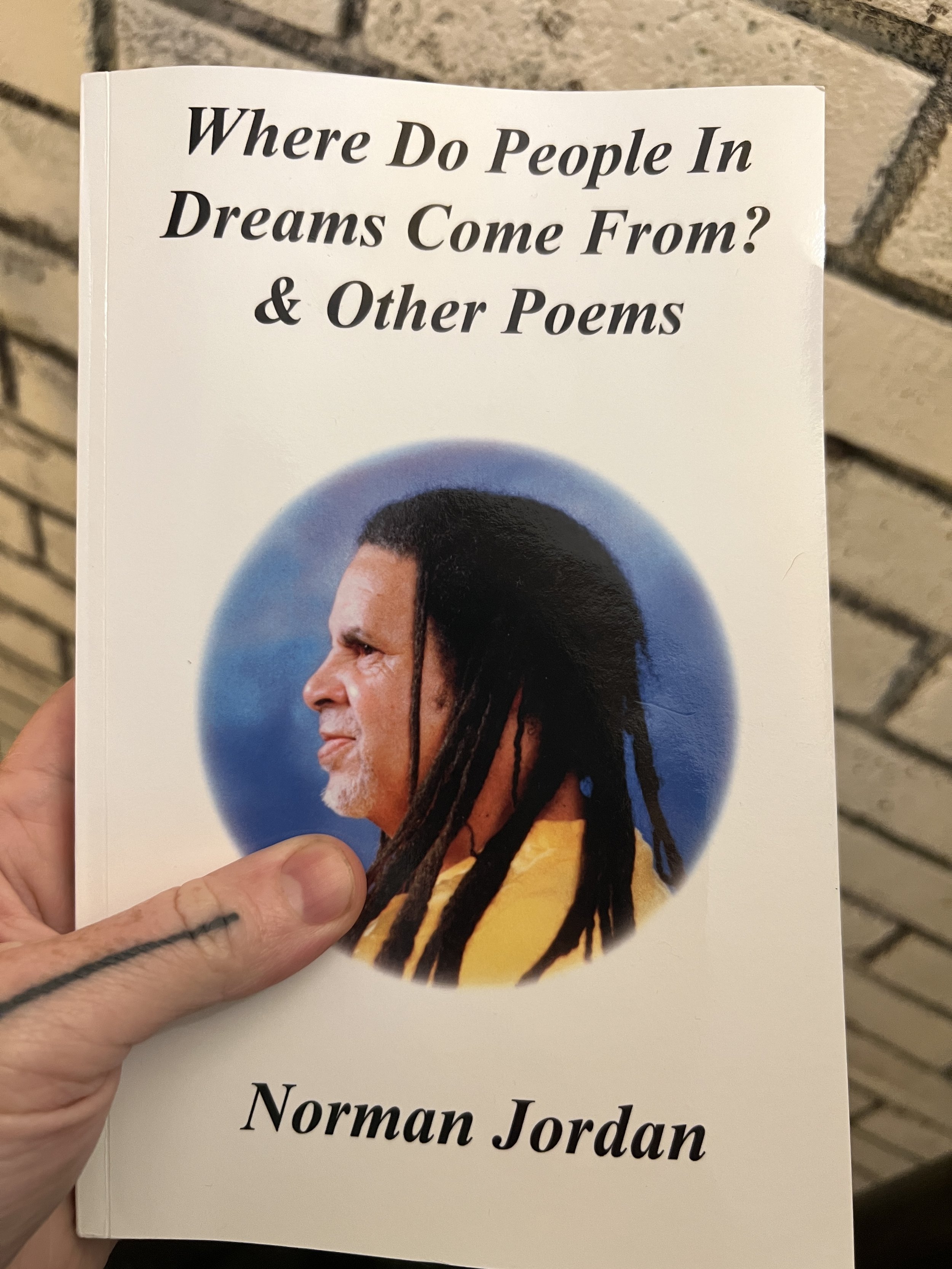NORMAN JORDAN
1938-2015
Norman Jordan is no longer with us, but I had the pleasure of meeting with his wife of fifty years, Dr. Brucella Jordan, before painting him. I was reading a collection of his work and had learned a bit about his life and accomplishments, but I wanted to know about him as a person. I asked her to share with me what it was like to be in Norman’s presence. Dr. Jordan spoke very warmly about her late husband, and later emailed me a poem she wrote about him with commentary (see below). She told me that although he had many roles and pursued many creative endeavors, he was, above all else, a poet. He was constantly writing, and saw poetry in every aspect of life. She also described him as even-keeled, easy to get along with, and likable. I lost count of how many times Dr. Jordan said the word “creative” when speaking about Norman.
This “creativity in motion” was apparent in the images I had of Norman. Most of them were candid, with him standing, looking like he was mid-sentence, and many of them showed him smiling. From the snapshots I saw, he must have frequently been surrounded by people, always moving, working, writing, creating. I wanted to give his portrait a sense of curiosity, which is how I imagine poets must see the world around them. I also wanted to capture kindness in his eyes. From everything I read and heard about Norman Jordan, I got the impression that although he saw the injustices of the world with clarity, he worked with kindness and consistency to make it a better place for those who came after him.
“It was a privilege to be able to daily observe the activities and thought processes of a truly creative person. He was a poet who saw poetry in everything; in every day, night, activity; Life. Living and observing was a poetic drama that inspired him to see it clearly, play with it, and then interpret it to the rest of us in his writing and actions. I could see that working within him up-close and from afar. I write poetry, but I am not a poet; Norman was a poet. His life was poetry and I am blessed to have been able to observe it. Why am I writing this now – tonight? Because, although I remember it still, I notice that the memory of it is not as distinct in my mind as it was six years ago when he passed away, and I don’t want to forget how lucky I was to have witnessed creativity in motion” -Dr. Brucella Jordan, Norman’s wife of fifty years
Seeing the Real You, by Dr. Brucella Jordan
Tonight
I’m laying here thinking and remembering
Things my mind won’t let me forget
As I often do before sleep overtakes me
Things from the past of course
That’s what old folks do
Young folks daydream about the future
Makes sense I guess
For me lots of past
Not as much future left
I’m thinking about Norman
So much to remember about him but
This one thing I don’t want to forget because
It energizes me to think about it
As if I shared in that part of him
Some of my favorite poems from his collection, “Where Do People In Dreams Come From? & Other Poems”
BIO
Norman Jordan was born in Ansted, West Virginia in 1938, but moved to Cleveland, Ohio as a youth to attend school. Unable to stay away, Jordan returned to Ansted in 1977, earning a bachelor’s degree from West Virginia University in theater, and then later a master’s degree in African American studies from Ohio State University. Jordan was a poet and a playwright, with his works anthologized in at least 42 books of poetry, making him one of the most published Appalachian poets. His poems have appeared in The Poetry of the Negro, Black Fire, Make a Joyful Sound: Poems for Children by A.A. Poets, In Search of Color Everywhere: A Collection of A.A. Poetry, and Wild Sweet Notes: Fifty years of West Virginia Poetry 1950-1999. A voice and leading force in the Black Arts Movement, Jordan’s work also appeared in journals dedicated to the movement such as Journal of Black Poetry and Black World. Jordan had also written two books of poetry: Destination: Ashes (1967) and Above Maya (1971). In 2008, Jordan was inducted into an exclusive group of poets named the Affrilachian Poets. Jordan was also a collaborator, editor, a storyteller, and had taught at West Virginia University, among other schools.
While living in Ohio, Jordan became a leading force in the Cleveland Poetry Movement, and he worked closely with the Karamu House, the oldest African American theater in the United States, which served as a spring board for many African American artists, including Langston Hughes and Ruby Dee. Cleveland became a notable point of circulation of ideas during the Black Arts Movement.
In addition, Jordan was the president and founder of the African American Arts and Heritage Academy (AAAHA), as well as the founder and director of the African American Heritage Family Tree Museum in Ansted. Jordan was very active in the community, especially with youth, serving as a director of a youth camp at Camp Washington-Carver for Culture and History for many years.
At the 21st annual day of observance of New River Gorge, which seeks to commemorate African Americans who lived in the valley and worked the railroads and coal mines that helped to fuel the industrial revolution, Jordan remarked that “as they pass away, it becomes even more important to look at what they represent.” A racial advocate, a mentor to our youth, and a voice for many, this is how we will choose to remember Norman Jordan.
(from The Project on the History of Black Writing)




